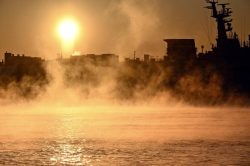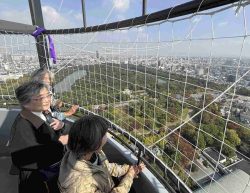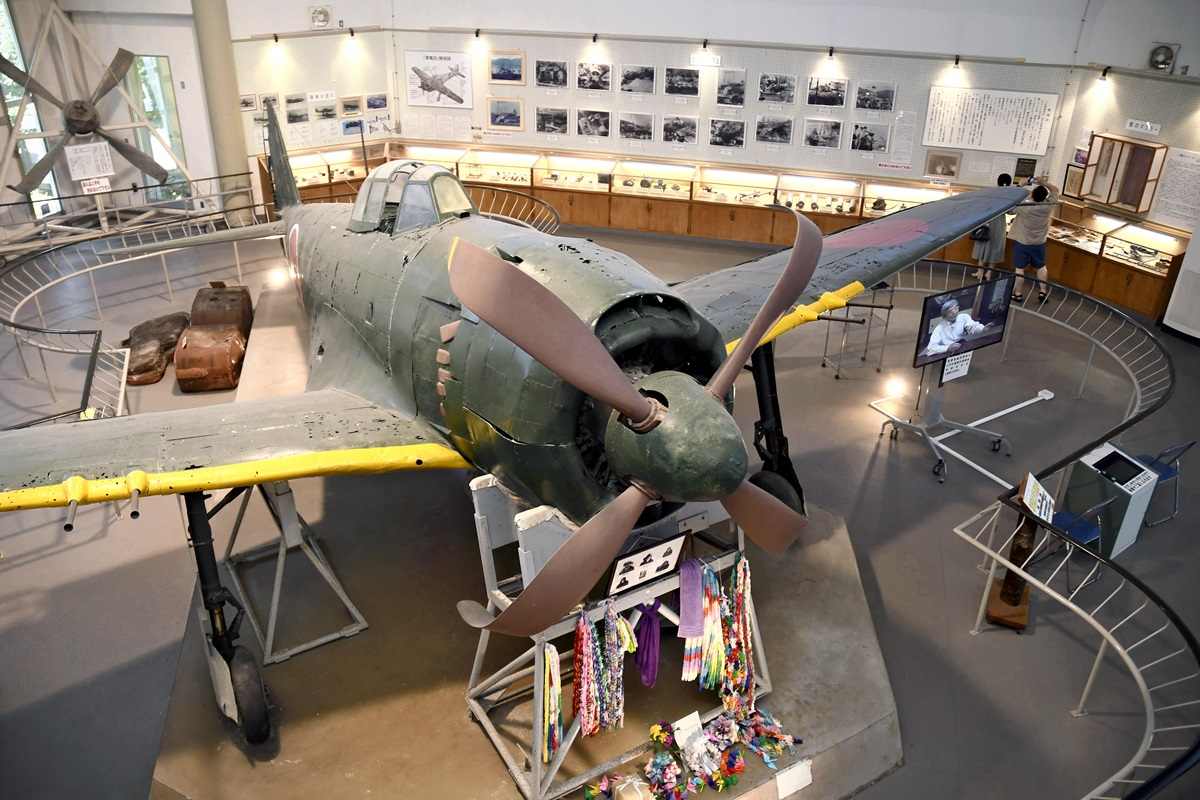
A Shiden Kai fighter plane is displayed at the Shiden Kai Exhibition Hall in Ainan, Ehime Prefecture.
11:11 JST, October 28, 2023
AINAN, Ehime — The last original Shiden Kai World War II fighter plane in Japan will never fly again, but it continues to fulfill an important mission by conveying wishes for peace to future generations thanks to the dedicated efforts of engineers and experts who repaired the aircraft.
The Shiden Kai was found at the bottom of Hisayoshi Bay off the coast of Ainan, Ehime Prefecture, in November 1978. It is believed to be an aircraft that failed to return during the war.
In the summer of 1979, the Ehime prefectural government asked what is now ShinMaywa Industries, Ltd., an aircraft manufacturer in Takarazuka, Hyogo Prefecture, to repair the aircraft. Kawanishi Aircraft Co., a forerunner of ShinMaywa, had made the planes, which were used by the Imperial Japanese Navy.
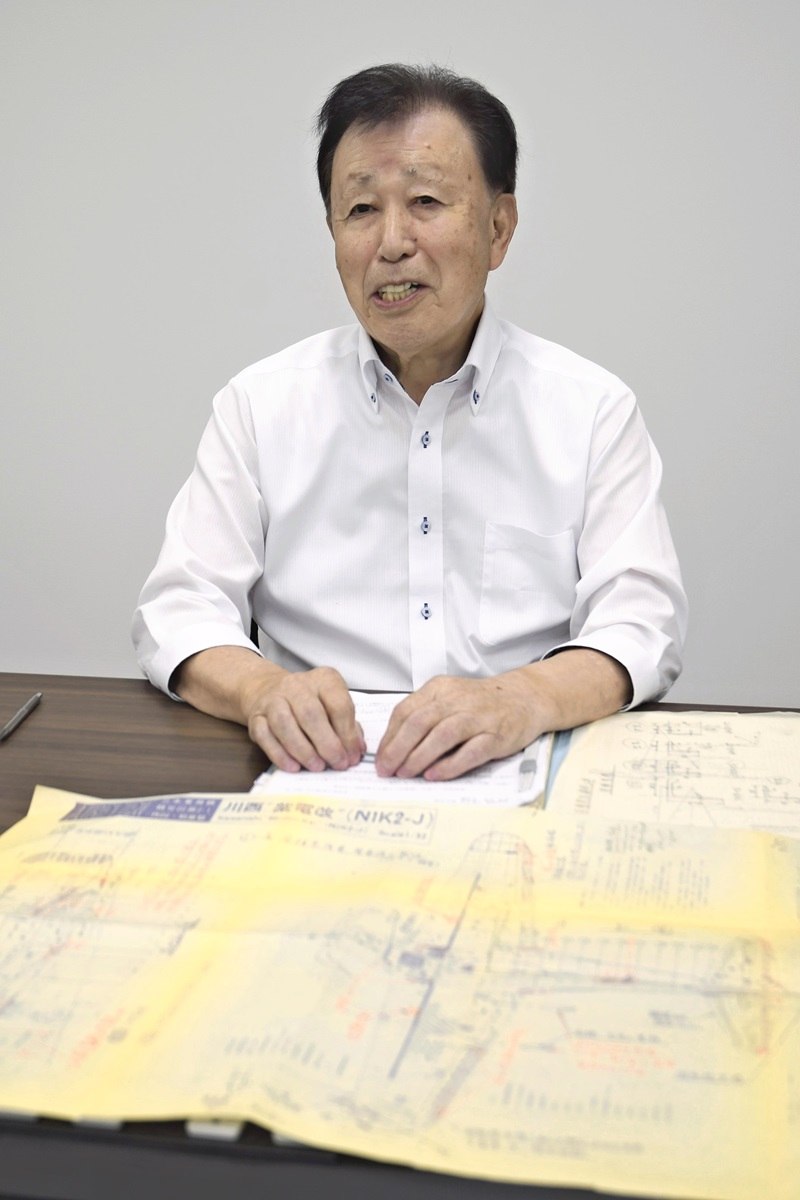
Yasushi Ikeda speaks in Takarazuka, Hyogo Prefecture, showing a diagram he drew for repair work of the Shiden Kai.
Yasushi Ikeda, then 44, was dispatched to oversee the work on-site and put together a repair team of about 15 members, which included the operator of a sheet metal business in Tokushima Prefecture.
“We had to feel our way through this work, and problems we’d never imagined kept popping up,” recalled Ikeda, now 88.
Although the aircraft’s fuselage had retained its shape, even after decades in the water, some components were missing or bent. Many parts were corroded, and the entire plane was covered in barnacles. The team began the restoration project by scraping off the barnacles and using high-temperature steam to remove grime.
The team’s difficulties were exacerbated by the fact that no blueprints detailing the Shiden Kai’s design remained.
After World War II, the General Headquarters of the Allied Powers (GHQ) ordered that design plans for all fighter planes in Japan be destroyed. While referring to supplements and appendixes from magazines that specialized in military aircraft from around the world, Ikeda pushed ahead with drawings for the work with the intention of using the remaining original parts wherever possible.
Complications
The repair work commenced in October 1979. As the fuselage was quickly corroding after being exposed to air, the team was given about one month to finish the project. However, as the deadline drew nearer, the team ran into a major problem.
“The main wing is so severely twisted that I can’t even begin describing the plane’s structure,” was the gist of a message Ikeda sent to the head of the company’s engineering division.
An internal metal frame was the support structure for the wing, but it had deteriorated over the years. As a result, the main wing was falling off the frame.
Ikeda attempted to reinforce the wing by fixing it in place with metal fittings that were positioned inside the metal frame. Such a technique would normally not be used in a plane, but the Shiden Kai would never need to fly again.
The method was adopted because priority was placed on restoring the aircraft to how it looked during its prime in the 1940s.
After the repairs were completed, the Shiden Kai was handed over to the prefectural government.
“When I think about it now, that was a really meaningful experience,” Ikeda said.
New building
The fighter is currently kept at the Shiden Kai Exhibition Hall, which opened in Ainan in 1980. The building sits on a mountain overlooking the sea where the plane sank. The exhibition hall also displays generators, fuel pumps and photos of pilots, among other items.
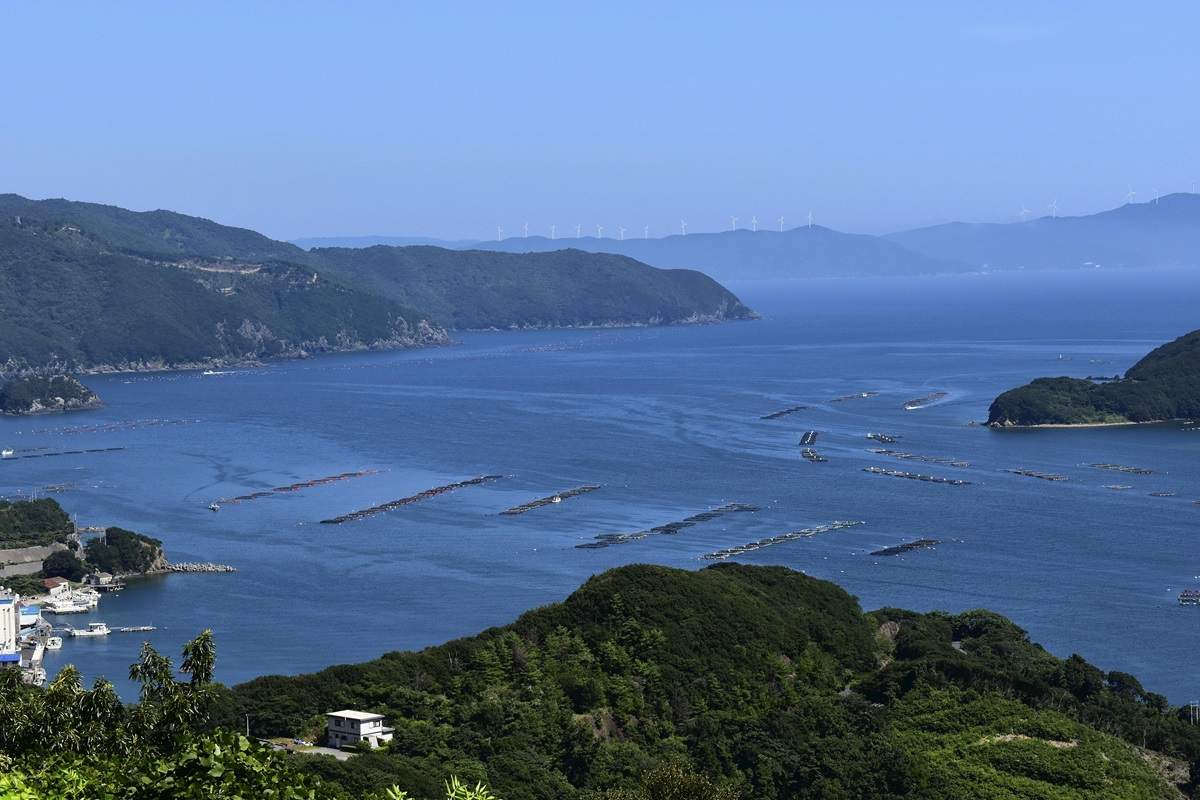
Hisayoshi Bay in Ainan, Ehime Prefecture, where the aircraft sank
The Shiden Kai aircraft on display is believed to be one of the six planes that took off from Omura Air Base in Nagasaki Prefecture on July 24, 1945, just before the end of the war, to intercept U.S. aircraft, but failed to return.
An investigation was conducted when the plane was pulled from the sea, but it is still unknown who was on board.
In addition to tourists, the museum attracted people who came to mourn those who died in battle, but as the years pass, that number has dwindled.
A new exhibition hall will be built by fiscal 2026 and the Shiden Kai will be moved to the new facility, which will be located right next to the current one. In the new building, the aircraft will be within sight of the sky through which it once flew.
“By that time, the aircraft will look even older, but I hope the next generation will think carefully about how to protect it and ensure its message is carried on,” Ikeda said.
Shiden Kai
The fighter plane is 9.34 meters long and has a wingspan of 11.99 meters. Packed with Japan’s cutting-edge technologies from the early 1940s, the aircraft had excellent climbing abilities and a top speed of about 600 kph. About 400 Shiden Kai were produced during the final years of the Pacific War. A local resident discovered the Ainan plane while diving off the town’s coast in November 1978, and the aircraft was salvaged in July of the following year. Of the four remaining Shiden Kai, three are displayed in museums in the United States.

Related Tags
"Features" POPULAR ARTICLE
-

Sanrio to Open Museum in Yamanashi Pref. Dedicated to Founder, Exhibits Include Hello Kitty, Other Characters
-

Autumn Foliage Surrounds Visitors to Tokyo’s Showa Kinen Park
-

My Daughter No Longer Speaks to Me, But I Want to See Her and My Grandchild
-

Kumamoto: Public Bath Refurbished as Library Where You Can Chat, Take Photos
-

Frozen Vegetables: Demand Rises for Convenient, Tasty Domestic Produce
JN ACCESS RANKING
-

Keidanren Chairman Yoshinobu Tsutsui Visits Kashiwazaki-Kariwa Nuclear Power Plant; Inspects New Emergency Safety System
-

Imports of Rare Earths from China Facing Delays, May Be Caused by Deterioration of Japan-China Relations
-

University of Tokyo Professor Discusses Japanese Economic Security in Interview Ahead of Forum
-

Tokyo Economic Security Forum to Hold Inaugural Meeting Amid Tense Global Environment
-

Japan Pulls out of Vietnam Nuclear Project, Complicating Hanoi’s Power Plans



